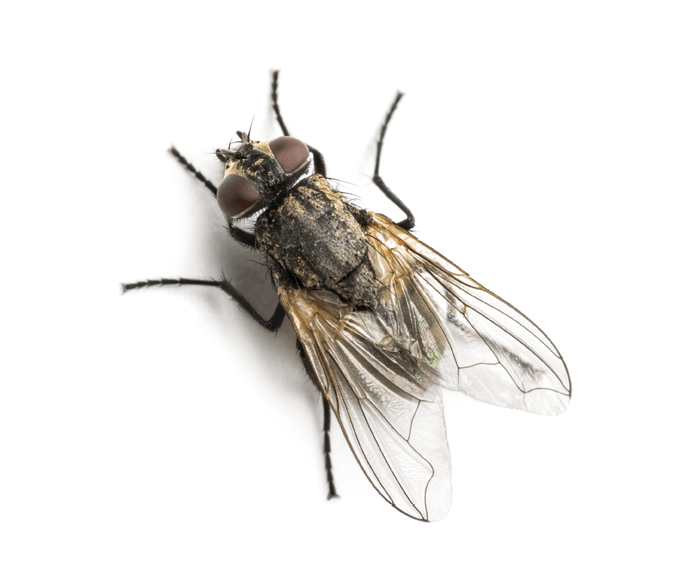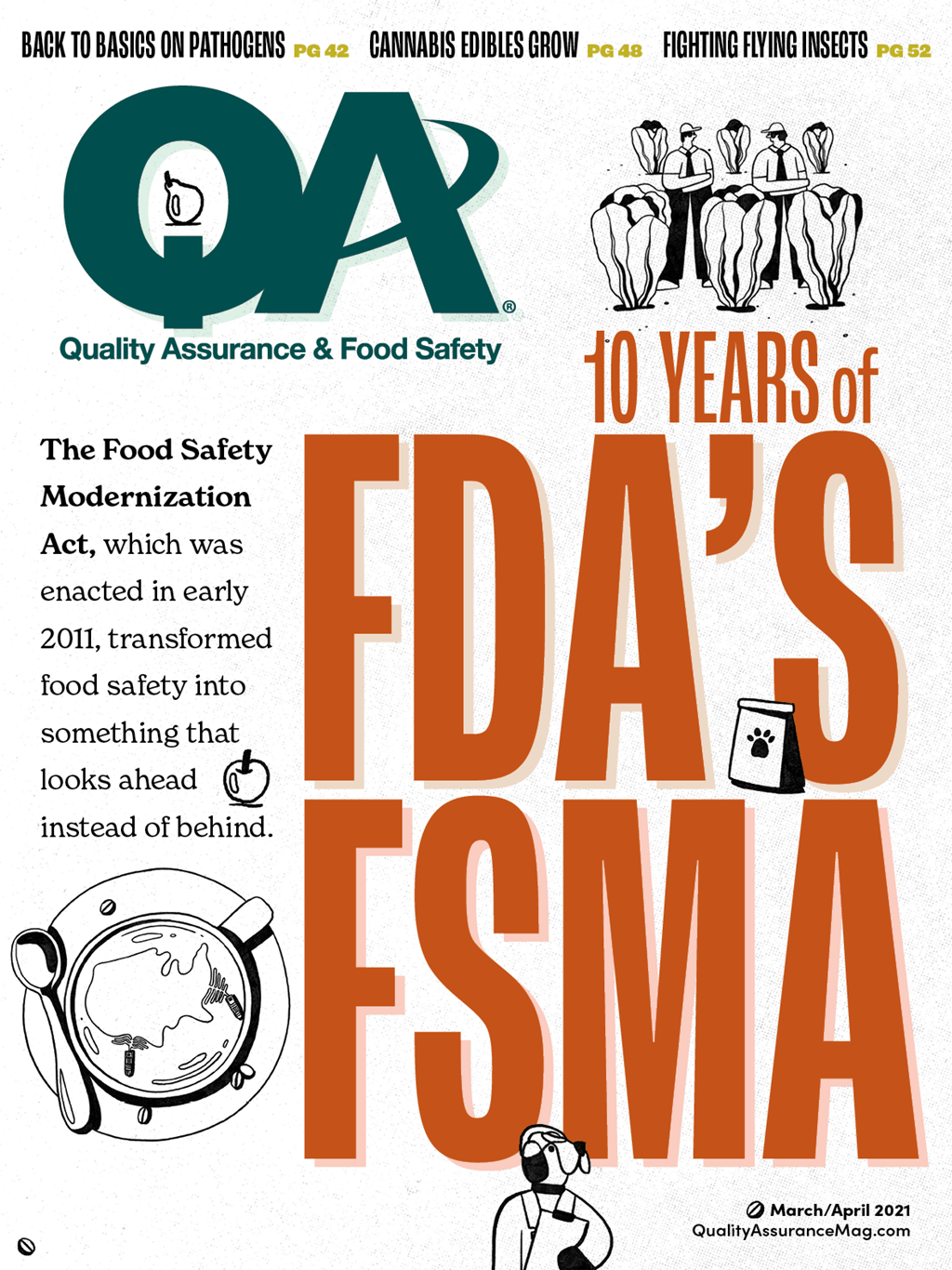
You’re a fly magnet, food producers.
It’s OK. It’s not your fault, entirely. You’re just too enticing.In all seriousness, spring brings with it a swarm of flying insect activity. From a variety of flies, to yellowjackets, moths and more, it can seem like a never-ending battle to protect your airspace.
We caught up with some pest professionals and product suppliers to help identify which flying insects are buzzing your business, how to control them and more.
Large Flies.
From a food safety perspective, these are the big perpetrators when it comes to potentially spreading pathogens. Cisse Spragins, owner and CEO of Rockwell Labs, said the main species you’re looking for here are houseflies, blowflies and lesser houseflies, which all breed outside and are attracted to food processing facilities by a number of factors, including the smells of food (which you can’t completely control) and garbage (which you can mitigate).
“They’re coming in because they can smell the food,” she said. “It’s stuff they’re going to be feeding on.”
They’re also attracted to light and certain fluctuations in temperature, said Mel Whitson, director of technical field services at Central Life Sciences. He said flies are constantly looking for about 82 degrees. If it’s hotter than that outside, they’ll be attracted to air-conditioned interiors. If it’s colder, vice-versa.
“There’s going to be a temperature gradient around the doors that they’re going to find delightful,” he said.
Preventing these flies from getting in includes securing entryways with exclusion products and keeping doors closed. But, maintaining the exterior of your structure can help keep them somewhat at bay. Keep landscaping and vegetation around the structure in good shape, and make sure garbage is covered and doesn’t build up.
“It doesn’t really take a lot to make those areas attractive to these flies,” Spragins said, recommending the use of bio sanitation products (which her company sells to the professional pest management and food industries) to effectively eat away at waste. “That’ll actually eliminate the odor that that material’s putting off.”
Whitson also said light traps can be a big help once these large flies make their way inside, but positioning is key. Keep them low, and make sure the lights aren’t pointing to entryways, as that will attract more flies in.
“When they’re in feeding mode, they’re usually within four feet from the ground,” he said.
Small Flies.
Whitson has one piece of advice that he gives to all quality assurance and food safety professionals when it comes to small flies such as fruit flies: The same environments that are a breeding ground for pathogens such as Listeria, are the spots most likely to serve the same purpose for fruit flies.
“Most of the time it’s a revelation,” he said. “So don’t wonder how the Listeria got from the drain into the food, because it’s a common site for pathogens and insects.”
Spragins says that any facility that does fermenting or uses lots of sugar or fruits are going to attract fruit or drain flies, which will breed indoors once they get in.
“Typically [drain flies breed] in drain scum — anywhere you have a surface where water is running over it pretty routinely,” she said. “You get like a film that’ll kind of form there, which is basically something that’s produced by bacteria, and then drain flies lay their eggs in that film.”
To combat them, keep up with sanitation, and Spragins said drains are another place where you can use bio sanitation products to eat away at the scum.
While fruit and drain flies aren’t categorized as public health pests by the Environmental Protection Agency, Spragins noted that you’ll still want to get rid of them.
“It can be really annoying to have them around you, even just for people working there,” she said. “And it’s disgusting. You obviously don’t want them in the product.”
Stored Product Flying Pests.
Whitson says one of the first steps to preventing stored product flying pests such as moths is inspecting what you receive and asking suppliers to treat incoming products such as unprocessed grain. The second step, he said, is doing a check of the stored product before you use it.
Finally, make sure you rotate product that comes in, since that’s how most stored product pests get into a facility.
“It’s kind of a no brainer, right?” he said. “First in, first out.”
Whitson said it’s important to inspect shelving and other cracks and crevices in storage areas to make sure grain, flour or rice haven’t spilled out and collected in unseen areas.
“Inspect things from all angles and make sure you clean up what’s compromised,” he said.
Also, moths are most likely to search for processed grains and cereals, so especially keep an eye on these products.
“They don’t have the same destructive chewing mouthparts,” Whitson said.
Other Flying Insects.
A range of other flying insects can cause issues during spring and summer. Eastern yellowjackets are drawn to facilities that process fruits and sugars, while Western yellowjackets are drawn to meat and poultry. Both could result in a health hazard for employees.
“You don’t want a stinging,” Spragins said.
Anna Berry, technical manager at McCloud Services, which is based in Illinois, said it’s also important to be on the lookout for flying ants (the reproductive members of an ant colony), mosquitoes and biting midges, as these can all prove to be nuisance to employees.
“But, their presence is normal and temporary,” she said. “As summer approaches, we’ll see less and less flying ants as the mating season is dwindling down. Exclusion and exterior chemical treatments can significantly reduce the amount of flying ants.”

Explore the March April 2021 Issue
Check out more from this issue and find your next story to read.
Latest from Quality Assurance & Food Safety
- Scentian Bio Wins Top Prize at IFT FIRST Startup Pitch Competition
- Evigence Debuts FreshSense to Change How Food Industry Measures Freshness
- Acme Releases Automated Scraper Strainer
- Mitzi Baum to Step Down as CEO of Stop Foodborne Illness
- USDA ARS Scientists Develop Pectin That Gels with Low-Sugar Products
- GS1 US Celebrates 50-Year Barcode 'Scanniversary' and Heralds Next-Generation Barcode to Support Modern Commerce
- New Florida Extension Agent Will Teach Stakeholders About Food Safety
- Athletic Brewing Company Announces $50 Million Equity Financing Round Led by General Atlantic





